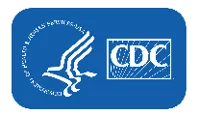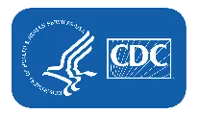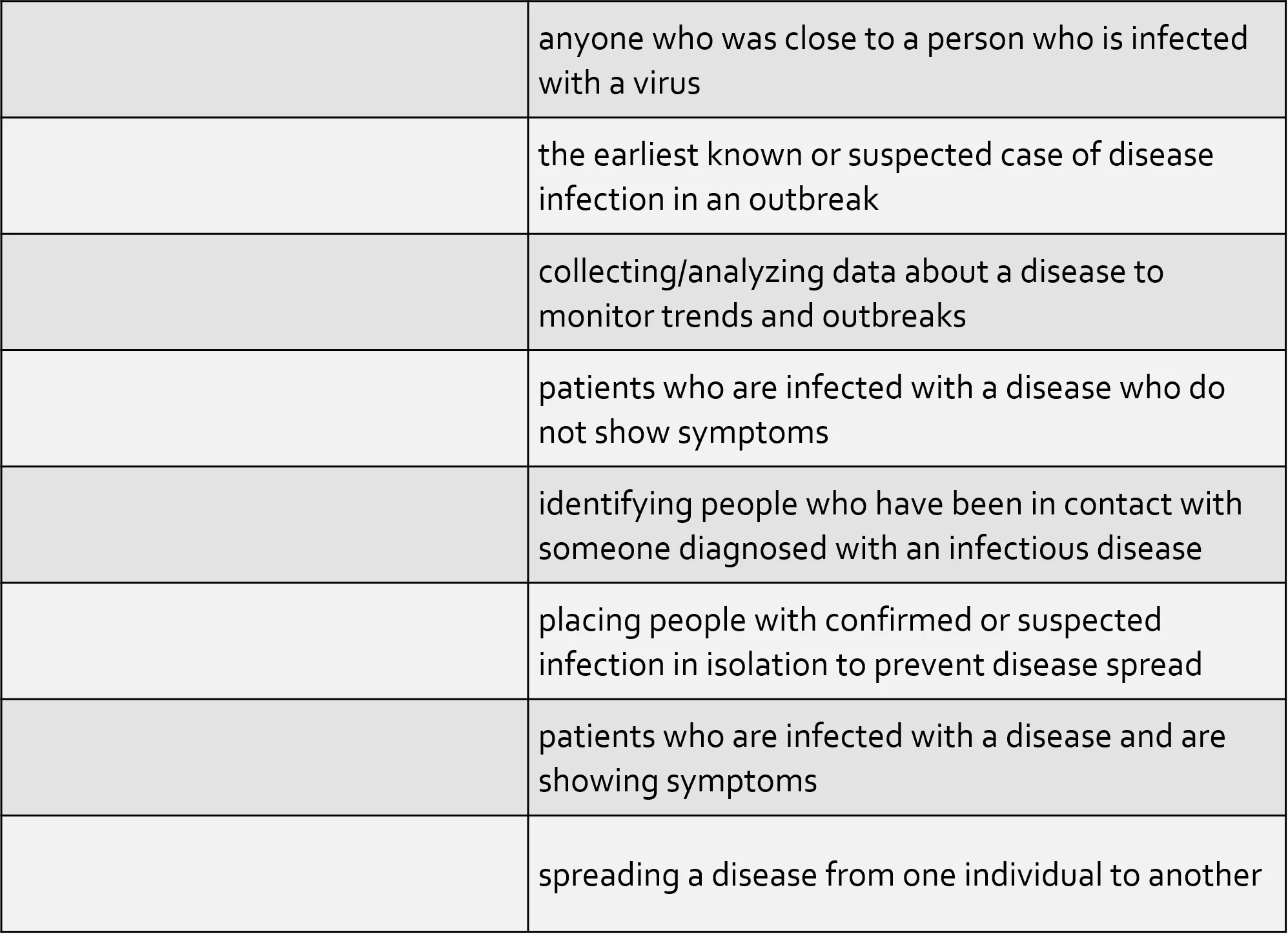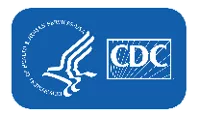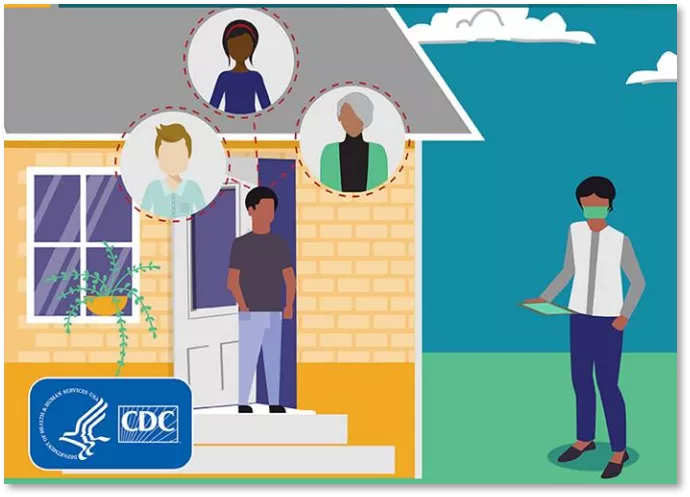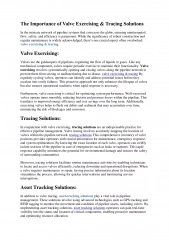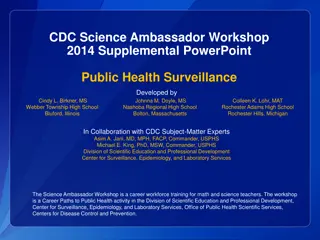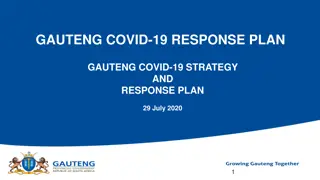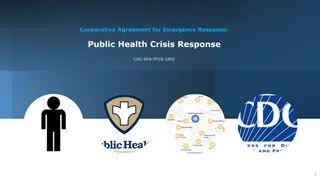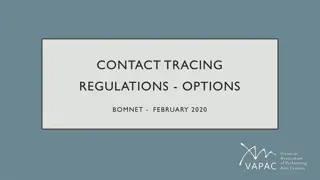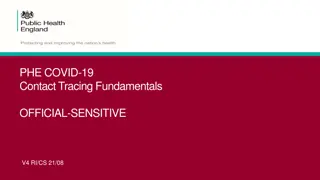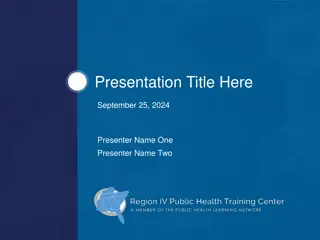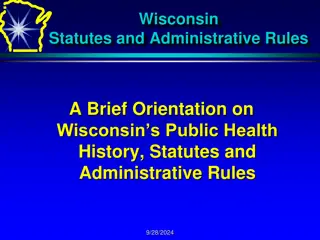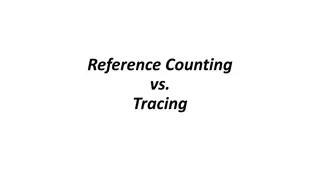Understanding Contact Tracing in Public Health
Contact tracing is a crucial process in public health aimed at identifying and monitoring individuals who have been in close contact with those infected with infectious diseases. It involves tracking and managing potential outbreaks, monitoring symptoms, and preventing further transmission. The history of contact tracing, challenges faced by contact tracers, and its importance in disease containment are discussed, highlighting its significance in controlling epidemics.
Download Presentation

Please find below an Image/Link to download the presentation.
The content on the website is provided AS IS for your information and personal use only. It may not be sold, licensed, or shared on other websites without obtaining consent from the author. Download presentation by click this link. If you encounter any issues during the download, it is possible that the publisher has removed the file from their server.
E N D
Presentation Transcript
Contact Tracing David J. Sencer CDC Museum Public Health Academy
anyone who was close to a person who is infected with a virus Word Bank asymptomatic the earliest known or suspected case of disease infection in an outbreak close contact collecting/analyzing data about a disease to monitor trends and outbreaks contact tracing patients who are infected with a disease who do not show symptoms index case identifying people who have been in contact with someone diagnosed with an infectious disease quarantine placing people with confirmed or suspected infection in isolation to prevent disease spread surveillance symptomatic patients who are infected with a disease and are showing symptoms transmission spreading a disease from one individual to another
Contact tracing is the process of identifying people who have recently been in contact with someone diagnosed with an infectious disease Close contacts of infected individuals need to take precautions to avoid infecting others if they become ill Contact tracers check up on close contacts frequently during disease incubation period to monitor for developing illness Understanding Contact Tracing
1. What experiences have you had with contact tracing in your community? 2. What difficulties do you think contact tracers might have when attempting to contact people after a disease diagnosis? Think About It 3. Why might quarantining after a disease exposure be difficult for some people?
Smallpox eradication in 1960s and 1970s Eradication efforts used ring vaccination technique due to shortage of vaccine Smallpox cases were identified Close contacts of those patients were located, vaccinated, and monitored for signs of illness during possible incubation period Close contacts spent 3+ hours with patient or were within 6 feet of any patient with a rash Contact Tracing and CDC Ring vaccination technique was later used for other disease outbreaks
Contact Tracing and CDC 2014-16 West Africa Ebola outbreak Contact tracing was challenging in rural areas Contact tracers followed ambulances to locate cases Contact tracers identified sanitation needs in communities in addition to case finding and monitoring Contact tracing is used today to monitor COVID-19 and help slow its spread
1. What are some reasons why contact tracing is more difficult in remote areas? 2. If contact tracers miss one close contact, what are possible consequences? Think About It 3. What skills do you think contact tracers need most?
From the Expert https://youtu.be/f0Q0yA_jJ2U
1. During the 2014-16 Ebola outbreak, how did CDC help with contact tracing? 2. Why do you think the first 2-3 days after infection is the critical window for contact tracing to occur? Think About It 3. How are schools in the United States using contact tracing to keep students safe?
Call to Action! 1. Conduct a disease transmission experiment. 2. Plan a contact tracing interview. 3. Share your findings. Give it a Try Why do you think participation is important?
Define Define the problem Research Do background research Requirements Specify requirements Use the Engineering Design Process Brainstorm Develop solutions Build Build a prototype Test Test and redesign Share Communicate results
1. Conduct a Disease Transmission Experiment - Set up 12 cups 11 filled with water and 1 filled with an infectious disease - Pair up the cups and mix the liquids in each cup between partner cups - Record pairings and continue mixing for 3 total rounds - At the end, perform a test to see which cups became infected during the trades - Locate your index cases using contact tracing Give it a Try
2. Plan a Contact Tracing Interview - Read the background info about David, a man who has recently tested positive for COVID-19 - Conduct a contact tracing interview with David to identify close contacts - Make recommendations to David to help him recover from the disease and to prevent the spread of COVID-19 Give it a Try
3. Share Your Findings - Instagram @CDCmuseum Give it a Try

 undefined
undefined


